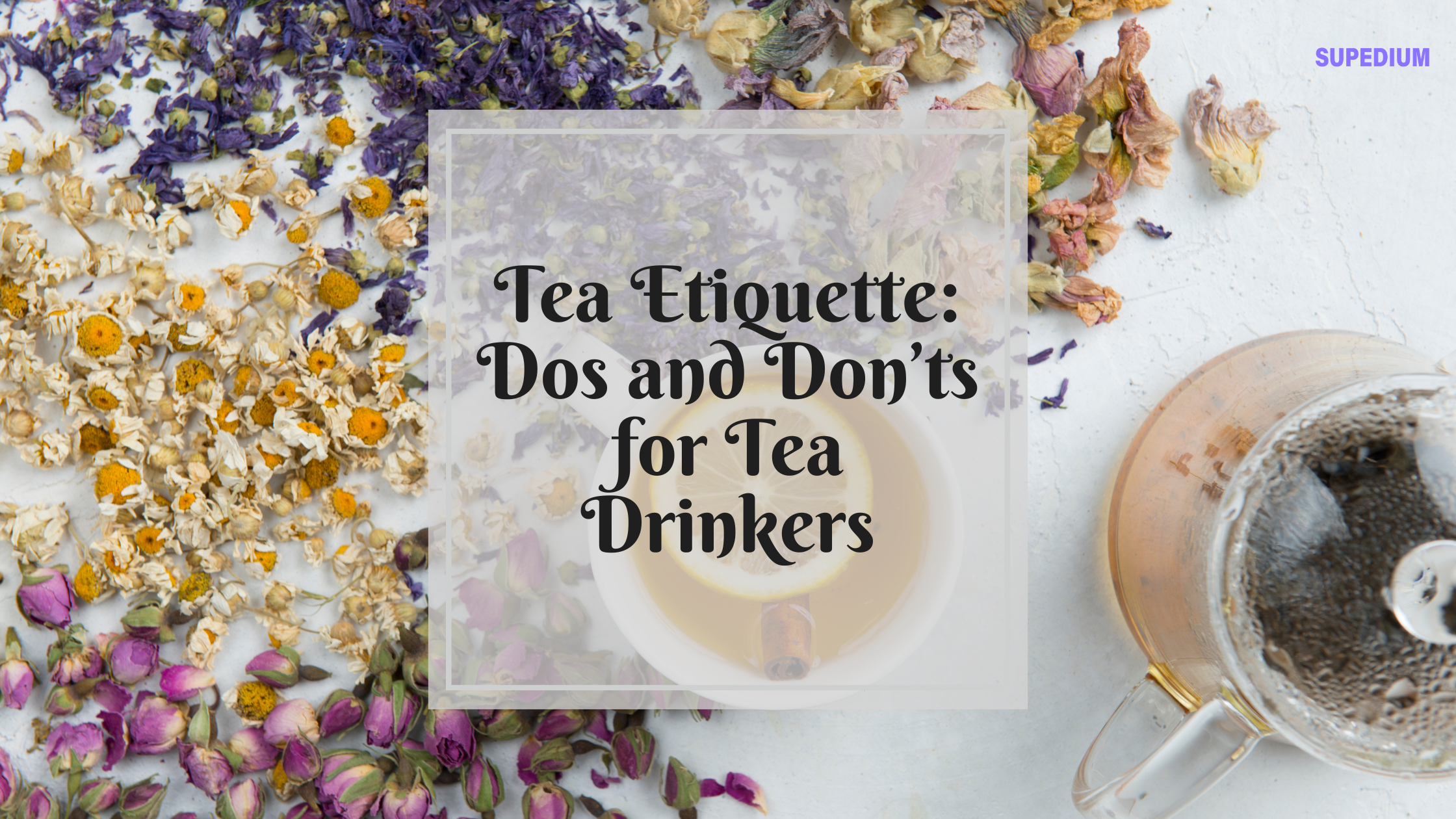Table of Contents
![]()
Tea drinking is more than just a daily ritual; it’s a practice steeped in tradition and cultural significance across the globe. Understanding and following tea etiquette enhances social interactions and demonstrates respect for both the tradition and your hosts. Whether you’re a tea enthusiast or a casual drinker, knowing the proper dos and don’ts can elevate your tea experience. Here’s a comprehensive guide to help you navigate the world of tea etiquette.
The Dos of Tea Drinking
Preparation and Presentation
When preparing tea, ensure that your teapots and cups are clean and appropriate for the type of tea you are serving. For instance, use porcelain or ceramic teapots for delicate teas and cast iron pots for stronger blends. Brew the tea according to its specific requirements, paying attention to the correct temperature and steeping time to bring out the best flavors. Serve the tea at an optimal temperature, neither too hot nor too cold, to enhance the drinking experience.
Pouring and Serving
When pouring tea, do so gently to avoid splashing. If you’re serving milk and sugar, offer them separately to accommodate various preferences. As a host, providing a selection of teas ensures that your guests can choose according to their tastes.
Drinking Tea
Hold your tea cup by the handle with your thumb and index finger. Avoid holding the cup by the rim or with your whole hand, as this can be perceived as unrefined. Sip the tea gently, avoiding slurping, which can be considered impolite. It’s best to enjoy your tea in small sips, allowing you to appreciate the flavors.
Handling Tea Accessories
Use a tea strainer when necessary to avoid tea leaves in your cup. Stir your tea gently with a spoon and place the spoon on the saucer when finished. After enjoying your tea, place used tea bags or leaves in designated containers to maintain a clean and organized setting.
Conversation and Behavior
Tea time is an opportunity for relaxed and polite conversation. Engage in light, pleasant topics and avoid controversial or sensitive subjects. Be mindful of your non-verbal cues, such as body language and eye contact, as these contribute to the overall etiquette.
Etiquette at Formal Tea Settings
At formal tea gatherings, follow the host’s lead in terms of customs and practices. Adhere to any dress codes and formalities as specified. Practice patience and poise, and wait for the host to indicate when it is appropriate to start or end your tea time.
The Don’ts of Tea Drinking
Preparation and Presentation
Avoid serving tea in dirty or chipped cups, as this can be perceived as disrespectful. Additionally, don’t use tea that is overly strong or weak, as this can affect the quality of the experience for your guests.
Pouring and Serving
Refrain from overfilling cups, as this can lead to spills and discomfort. Avoid pouring tea from a height, which can cause splashing and may come across as hasty.
Drinking Tea
Don’t drink your tea too quickly or too slowly. Rapid consumption can appear as if you’re in a rush, while sipping too slowly might give the impression of disinterest. Additionally, don’t rest the cup on the table with your fingers; this can be seen as unsophisticated.
Handling Tea Accessories
After brewing, don’t leave tea bags in the cup as this can lead to over-steeping and bitterness. Also, avoid placing spoons or straws directly on the tablecloth, as this can create a mess and be considered unhygienic.
Conversation and Behavior
Avoid interrupting others or speaking too loudly, as this can disrupt the peaceful atmosphere of tea time. Steer clear of sensitive or personal topics that might make others uncomfortable.
Etiquette at Informal Settings
Even at casual gatherings, don’t become overly familiar with your hosts or other guests. Each setting has its own level of formality, and it’s important to respect these boundaries. Avoid assuming that casual behavior is always acceptable, as this can lead to misunderstandings.
Cultural Considerations
Tea etiquette varies significantly across cultures, each with its own set of traditions and practices.
British Tea Etiquette
In Britain, tea is often accompanied by milk and sugar. The proper use of these condiments is integral to the tea experience. Afternoon tea, a quintessentially British tradition, involves a formal setting with a variety of finger sandwiches, scones, and pastries. Observing the proper use of utensils and the order of service is crucial in this setting.
Chinese Tea Etiquette
Chinese tea ceremonies are deeply rooted in tradition and emphasize the ritualistic aspects of tea preparation and consumption. Key practices include the use of a tea pet and specific rituals for washing the tea leaves and cups. Respect and mindfulness are central to the Chinese tea experience.
Japanese Tea Etiquette
Japanese tea ceremonies, or “chanoyu,” involve a complex set of rituals and are performed with grace and mindfulness. The ceremony focuses on the aesthetics of tea preparation and drinking, and participants are expected to demonstrate respect and calm throughout the process.
Other Cultural Variations
In other regions, tea customs may vary widely. For instance, in Morocco, tea is often served sweetened with mint, and the process of pouring tea from a height is part of the tradition. Understanding local customs can help you navigate tea etiquette in multicultural settings.
Conclusion
Tea etiquette encompasses a wide range of practices that contribute to a pleasant and respectful tea experience. By adhering to the dos and don’ts outlined here, you can ensure that you and your guests enjoy tea in a manner that honors both tradition and good manners. Remember to observe and adapt to the specific practices of your host or the cultural context in which you are enjoying your tea.
Share This





Be the first to comment